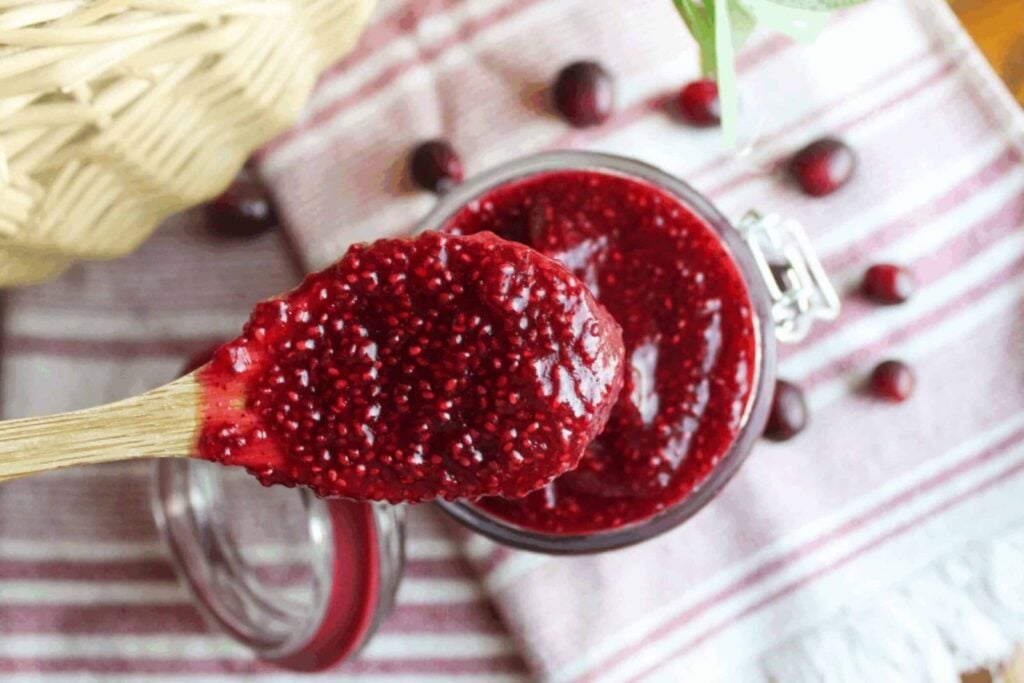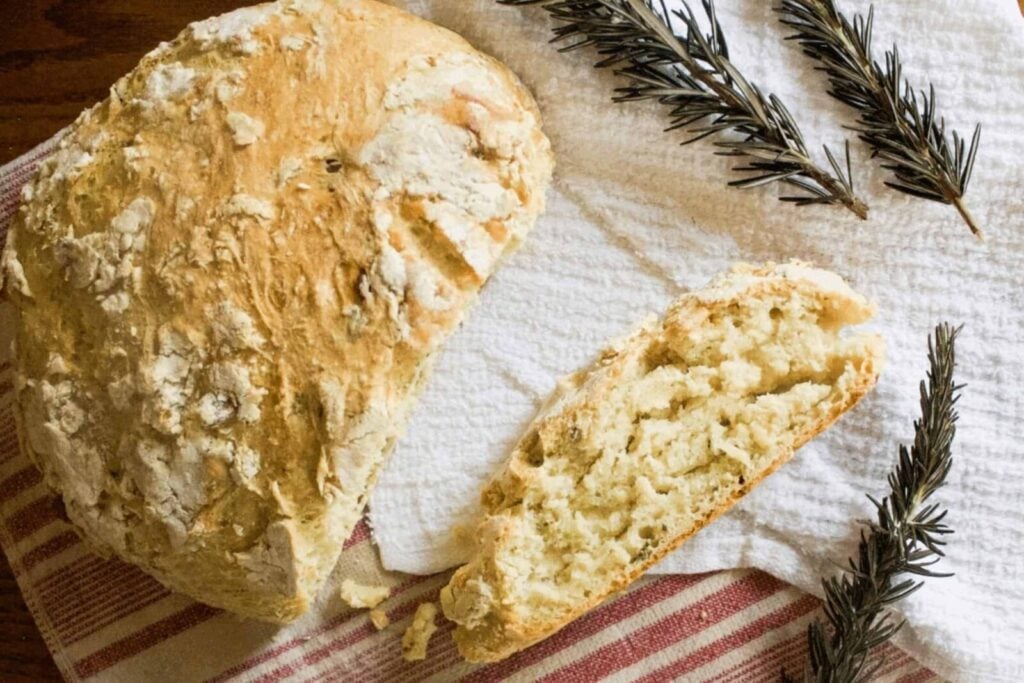Apple scrap vinegar is a simple, sustainable way to turn leftover apple cores and peels into a flavorful, all-natural vinegar. With just a few ingredients and a little patience, you can create your own homemade apple vinegar that is perfect for salad dressings, marinades, cooking, and even natural remedies. Not only does it help reduce food waste, but it also produces a tangy, unique flavor you won’t find in store-bought vinegar. If you have ever wondered how to make apple cider vinegar from apple scraps or wanted a reliable apple scrap vinegar recipe, this step-by-step guide will show you exactly how to do it.
Disclosure: This post may contain affiliate links. I may earn a small commission if you purchase through them at no additional cost to you.
Why Make Apple Scrap Vinegar at Home
Homemade apple vinegar, also called apple scrap vinegar, is perfect for anyone looking to:
- Repurpose apple cores and peels instead of throwing them away
- Create a natural, preservative-free vinegar for cooking and cleaning
- Experiment with fermentation in the kitchen
- Enjoy a milder, artisanal alternative to commercial apple cider vinegar
Using apple scraps instead of whole apples also makes this method eco-friendly and budget-conscious.
Ingredients for Apple Scrap Vinegar
To make your own apple scrap vinegar you will need:
- Apple scraps such as peels, cores, and leftover pieces from organic apples
- 1 to 2 tablespoons organic cane sugar per cup of apple scraps
- Filtered water enough to fully submerge the scraps
- A fermentation kit
Tip: Mix sweet and tart apples for a balanced, flavorful vinegar. Wash apples thoroughly before peeling to remove dirt or residues.
Apple Scrap Vinegar Recipe
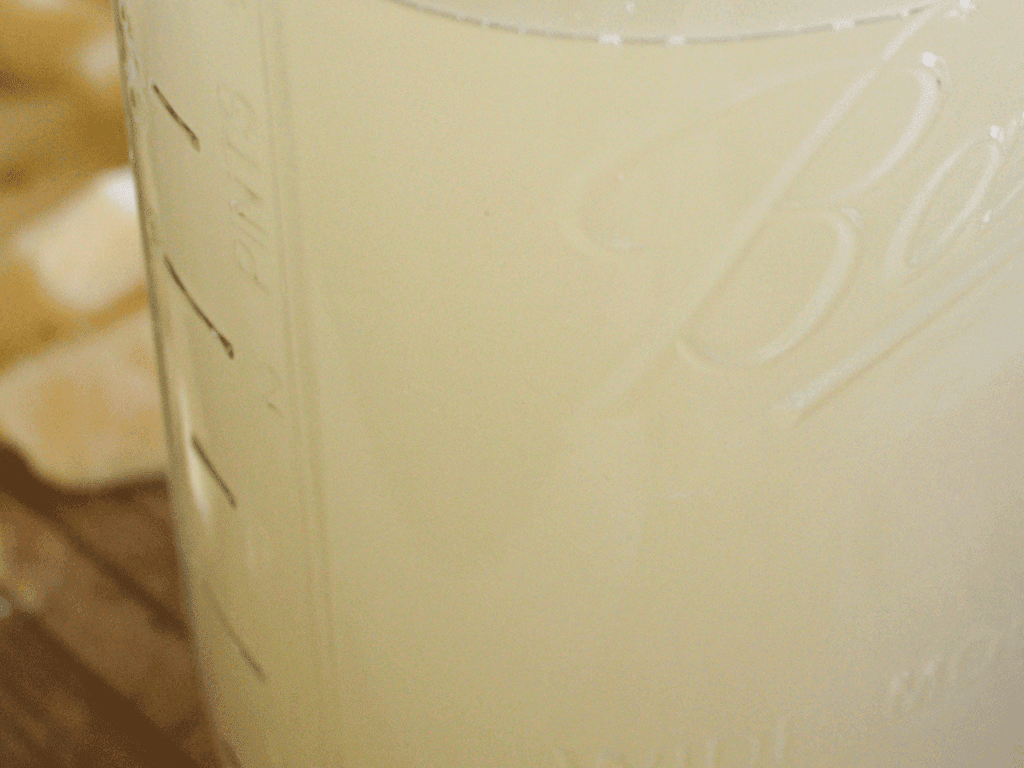
1. Collect and Prepare Apple Scraps
Save your apple cores, peels, and leftover pieces in a clean glass container. You can make vinegar every time you have scraps or freeze them in wide-mouthed jars until ready to ferment.
2. Create the Vinegar Base
Place the apple scraps in a large glass or ceramic container. Make sure the container is clean to prevent unwanted bacteria. If using a wide-mouthed jar, use fermentation weights and lids to keep the scraps submerged and protected.
3. Add Sweetener and Water
For every cup of apple scraps, add 1 to 2 tablespoons of organic cane sugar. Fill the container with filtered water so that all scraps are fully submerged. Avoid chlorinated tap water because it can interfere with fermentation.
4. Cover and Stir
Stir the mixture to dissolve the sugar and distribute it evenly. Cover the container with a clean cloth secured with a rubber band or use fermenting lids. This allows airflow while keeping dust and debris out.
5. Allow Fermentation
Place the container in a dark area with a temperature between 60 and 80 degrees Fahrenheit. Stir daily to help distribute natural yeasts. Bubbles indicate active fermentation. A layer of white or gray slime called kahm yeast is normal and harmless.
6. Monitor and Taste
Initial fermentation usually takes 2 to 4 weeks. The apple scraps will first turn alcoholic and then acidic. Taste periodically until your desired acidity is reached. For a stronger flavor, ferment for 2 to 3 months.
7. Strain the Vinegar
Once your vinegar reaches the desired taste, strain out the solids using a fine mesh strainer or cheesecloth. Compost the scraps or discard them.
8. Bottle and Store
Transfer the vinegar to clean glass bottles with airtight lids. Leave headspace for residual fermentation gases. Store in the refrigerator or a cool, dark pantry.
Uses for Homemade Apple Scrap Vinegar
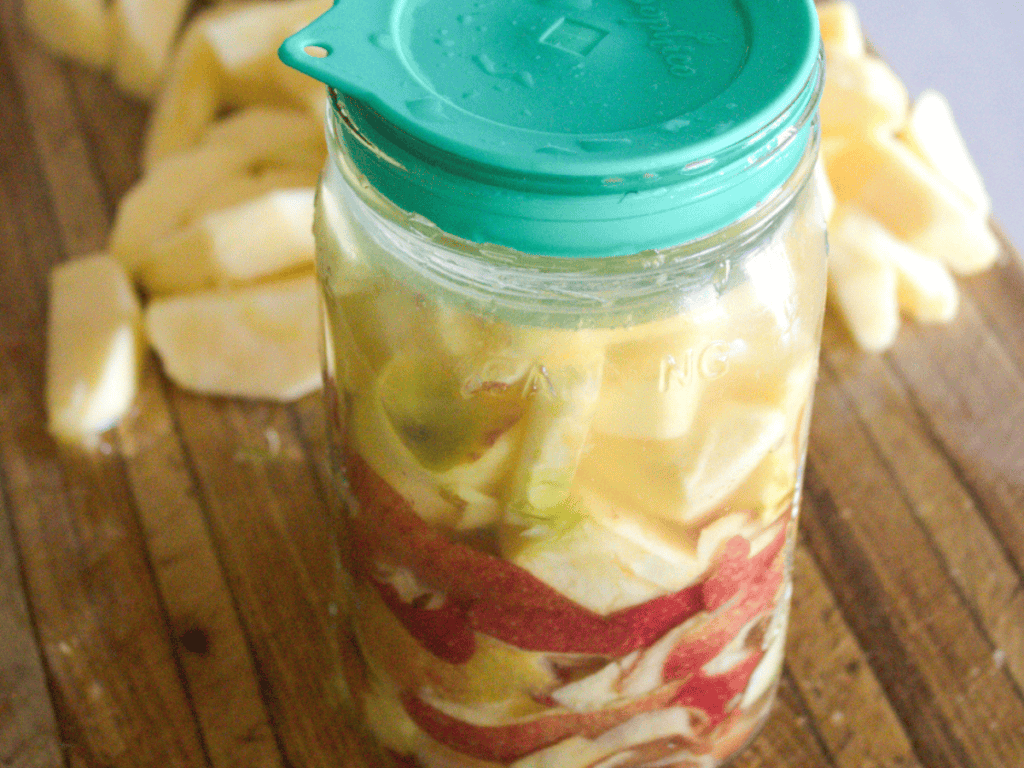
Apple scrap vinegar can be used in many ways:
- Salad Dressings: Mix with olive oil, mustard, and herbs for a tangy dressing
- Cooking and Pickling: Substitute it for other vinegars in sauces, marinades, and pickles. Test acidity before canning
- Health Tonic: Mix a teaspoon with water for digestive support. This is not medical advice
- Bath Soak for Kids: Add a splash to bathwater for a soothing experience
- Bone Broth Enhancer: Helps extract more nutrients and collagen from bones. Check out my post on How to Make Bone Broth
How Apple Scrap Vinegar Differs from Apple Cider Vinegar
Apple scrap vinegar and apple cider vinegar are both made from apples but have differences in flavor, nutrients, and production:
- Apple scrap vinegar is made from leftover apple peels and cores, often giving a milder or more complex taste depending on the apple varieties.
- Apple cider vinegar is made from freshly pressed apple juice, producing a consistent, tangy apple flavor.
- Homemade apple scrap vinegar retains nutrients from the apple scraps. Commercial apple cider vinegar may lose some nutrients during filtration or pasteurization.
- Apple scrap vinegar allows for experimentation with apple varieties and fermentation times, giving you an artisanal and personalized product.
Tips for Perfect Apple Scrap Vinegar
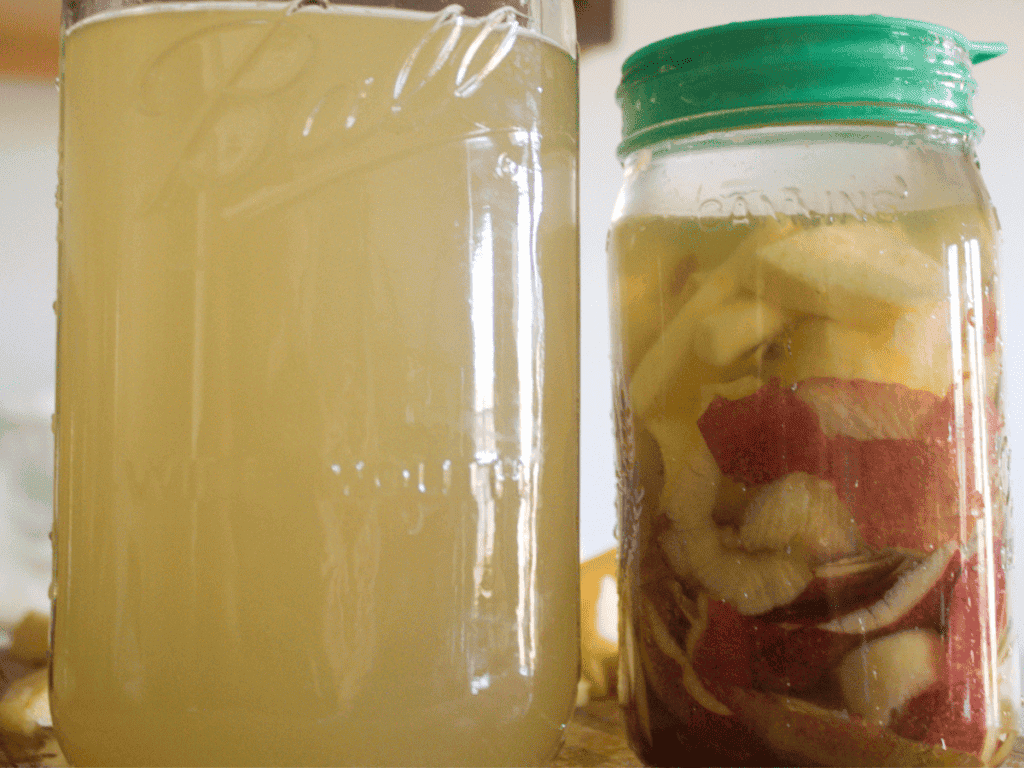
- Use organic apples whenever possible
- Ensure all apple scraps are fully submerged to prevent mold
- Taste your vinegar periodically to monitor acidity
- Keep fermentation containers clean and in a stable, dark area
Frequently Asked Questions
Q: Can I make vinegar from any type of apple?
Yes, but organic apples are best. Mixing sweet and tart varieties creates a balanced flavor.
Q: How long does apple scrap vinegar take?
Fermentation usually takes 2 to 4 weeks initially, but 2 to 3 months produces a stronger acidity.
Q: Can I use this vinegar in recipes instead of apple cider vinegar?
Yes, it works in salad dressings, marinades, and cooking. Be cautious with canning because acidity may vary.
Q: How do I store homemade apple vinegar?
Bottle in airtight glass jars and store in a cool, dark pantry or the fridge.
Apple Scrap Vinegar
Ingredients
- 4 Cups Apple Scraps
- 4 Tbsp Sugar
- filtered water
Instructions
- Combine all of the ingredients into a quart size jar and mix.
- Place a fermenting weight and lid on the jar and put in a cool dark place to ferment for minimum 6 weeks.
In summary, while both apple scrap vinegar and apple cider vinegar share apple as a common ingredient, their production methods, flavor profiles, and potential benefits differ. Apple scrap vinegar, with its emphasis on repurposing kitchen scraps, offers a unique and sustainable twist on the more conventional apple cider vinegar. Homemade variations of both types allow for exploration and customization, providing a diverse range of options.
Hi, I’m Ashley — mama, maker, and lover of all things from-scratch. Around here, you’ll usually find me barefoot in the kitchen, covered in flour or beeswax, with kids underfoot and something simmering on the stove. I believe in slow living, simple joys, and the kind of home that smells like cinnamon rolls and sunshine. Find out more about me here.


